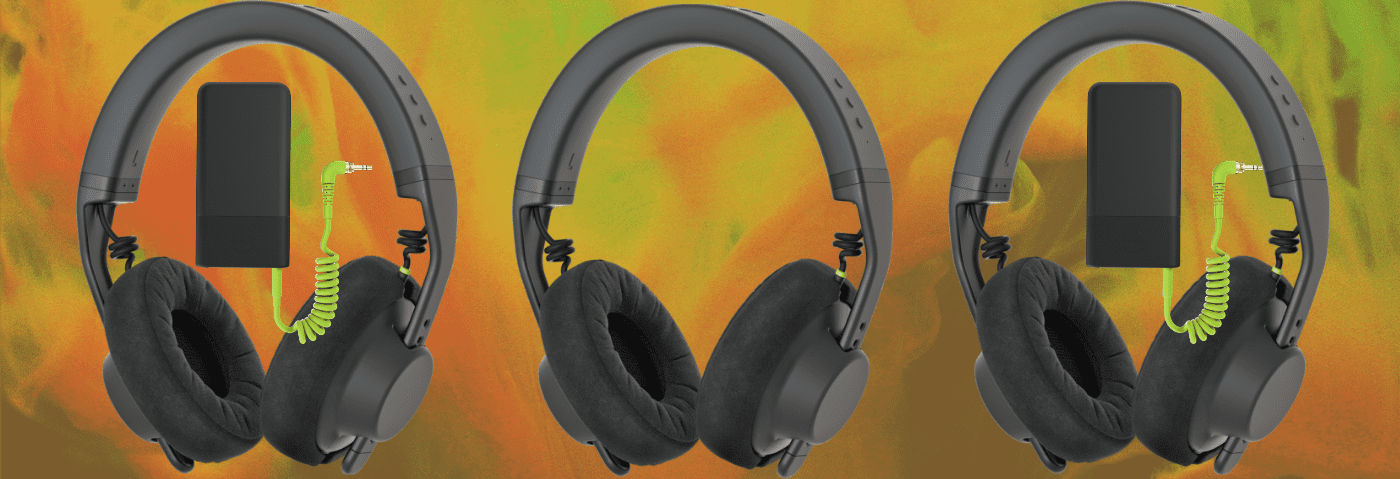AIAIAI’s studio headphones are the first wireless headphones with a dedicated transmitter. But is going cable-free worth it? Are they the best choice for music production? We test them out.
AIAIAI make modular headphones aimed at DJs and producers. Their minimalist, functional designs are a natural fit with electronic music. Like modular synths, they can be customised, and parts replaced easily in future. The company also stands out for its responsible design philosophy, using recycled and renewable materials where possible.
We’ve previously tested out a few different configurations of AIAIAI’s TMA-2 headphones, and rated them all highly. The new Studio Wireless+ model sits at the top of their range, with a price tag to match. The speaker units and earpads are identical to those used in the TMA-2 Studio, which we reviewed in 2021. The big difference is in the wireless capabilities. These headphones are aimed at music creators who want freedom from being tethered to a cable. Wanna go make tea? Go for it. Wanna get the front door? Fill your boots. All while listening to your creations on the go.
How are the AIAIAI TMA-2 different in terms of “wireless”?
The TMA-2 Studio Wireless+ contains not one but two different wireless systems. The headset can connect over Bluetooth to consumer devices. But by far the more innovative feature is a second, low latency wireless system called W+ Link, aimed at studio use. It uses a dedicated transmitter, roughly the same size as a phone power brick. This plugs into a headphone output, streaming audio to the headset.


Why this extra wireless system?
Well, Bluetooth has limited bandwidth, even in its latest 5.0 incarnation. And limited bandwidth means poorer sound quality and significant latency. These things aren’t a big problem for casual listening. If that’s all you need, AIAIAI makes cheaper models with just Bluetooth wireless.
For music production, however, Bluetooth doesn’t really cut it. The reduced audio quality could affect the sound design and mix decisions. And the latency is likely to mess up the timing, for example when overdubbing live parts.
This is where W+ Link comes in. It provides a far higher quality and stable form of wireless. The audio is transmitted uncompressed, so there is no loss of quality. Latency is low and fixed at 16 milliseconds, which is around half what even low latency codecs can manage over Bluetooth. But is it good enough for studio use?
Key features
The speaker units in these headphones use a bio-cellulose diaphragm tuned for a detailed sound. The earpads are cushioned with memory foam and covered in plush Alcantara fabric.
The dual wireless system is cleverly designed. A recessed slide switch tucked away on the headband selects between Bluetooth and W+ Link modes. Charging is via USB-C sockets on the headband and the transmitter, and each takes a few hours. Battery life is stated as 16 hours in W+ Link mode and over 80 hours with Bluetooth.
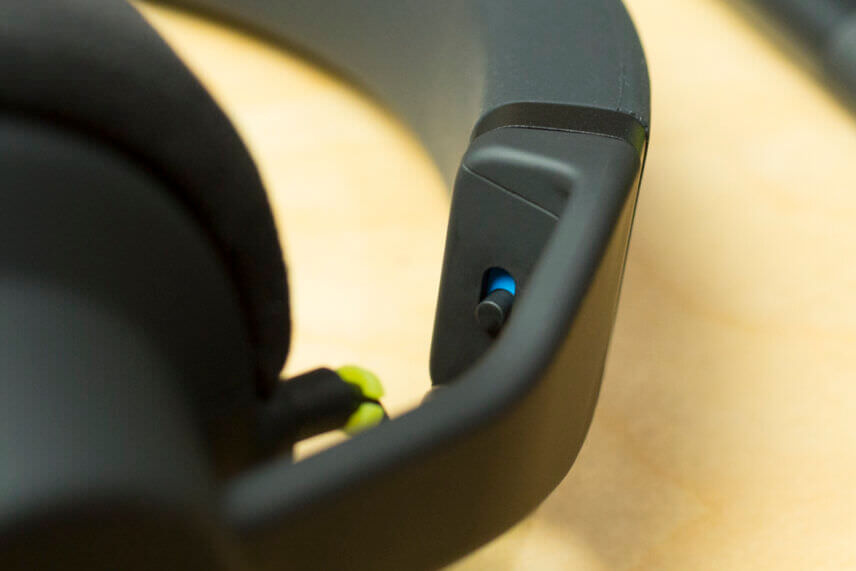
Three small buttons on the outside of the headband deal with functions such as power on and off, wireless pairing and volume. They’re unobtrusive but easy to feel and operate with fingertips.
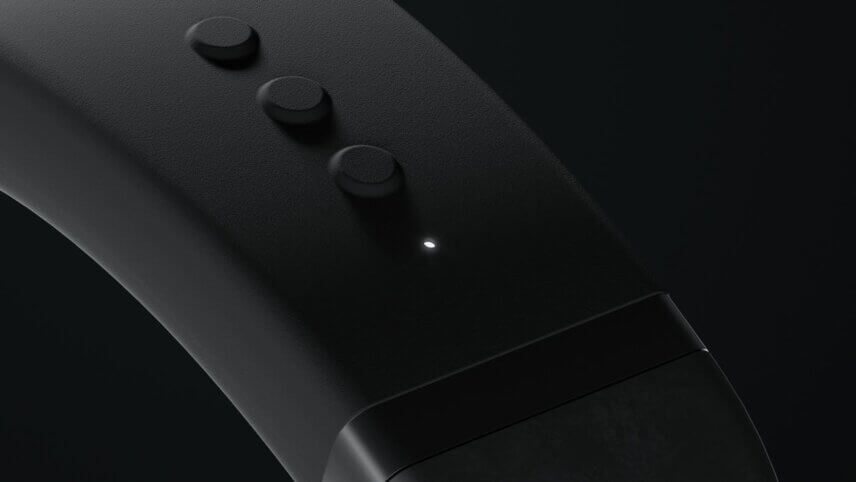
These headphones also come with a traditional audio cable, making them very versatile.
First impressions
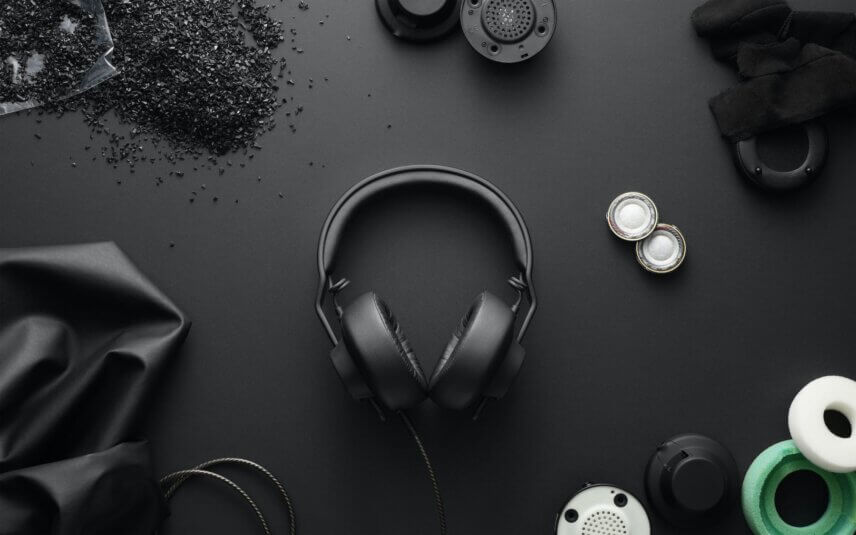
The first job with the TMA-2s is to assemble them. The modular design means the components all come in separate bags (made from recycled plastic). There’s something satisfying about being responsible for this final build stage. Everything fits together neatly by hand with no tools required.
After charging, we launched straight into trying out the two wireless systems. Pairing was quick and easy in both cases. However, bit of care is needed with gain staging using the W+ Link transmitter. In this mode, the headset powers on with the volume quite high, creating an audible background hiss. Thankfully that soon disappeared when we turned down the volume control on the headband and raised the level of the headphone output feeding the transmitter.
Sound quality
Sonically, initial impressions are excellent. The Bluetooth mode works well for general listening. For music production, there is a subtle but audible step up in sound quality in W+ Link mode. Comparing W+ Link with the cable, the only difference we could hear was in volume. The wireless transmitter needs to be fed by a higher level compared to the cable. AIAIAI confirmed that the frequency response of W+ Link and wired is almost identical. That is an impressive achievement and gives confidence that you could use these headphones for wireless mixing.
The sound is best described as detailed and refined. The bass is full and extended but not hyped. The mids and tops are revealing of mix details, with good separation throughout the frequency range. In comparison to the Beyer DT770 and DT880 Pros, we felt that the TMA-2s had the edge as an all-rounder for dance music production. They’re more neutral in the mids than the 770s, and stronger in the bass than the 880s.
There is a noticeable lift somewhere in the high end. AIAIAI told us this is deliberate. The drivers have been tuned to give some enjoyment for music creation, while balancing that with enough neutrality for mixing. We think they’ve got the balance about right. The brightness adds clarity, helping zoom in on critical mix decisions with things like hi-hats, cymbals and noise reduction.
In the mix
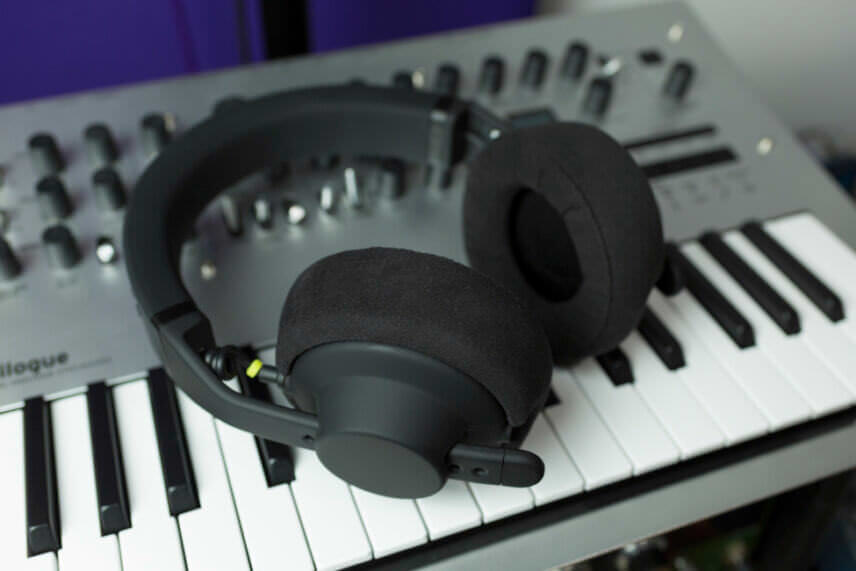
Loading up some mixes we’re currently working on, these headphones fitted into our workflow immediately. Using W+ Link mode, we got stuck into adjusting EQ and levels. The detailed sound proved ideal for these tasks. We’d be more than happy to use these headphones as part of our mixing workflow.
The wireless aspect really comes into its own when moving around the studio. Tweaking hardware synths and drum machines on the fly feels much freer without a cable. Walking or dancing around when checking a mix gives a fresh perspective compared to sitting down starting at the DAW. And unlike with monitors, you never need to worry about straying out of the sweet spot.
We also tried some live keyboard overdubs to see how the latency fared. Setting up a simple beat, we played in a rhythmic synth part over it while monitoring in W+ Link mode. We then repeated the process using wired headphones. Zooming in, there was a small delay visible on the wireless overdubs, but it didn’t translate into obviously audible issues. The latency is also constant, so it would be easy to compensate by dragging the audio in the DAW. It’s worth being aware of though.
Physically, the headphones are surprisingly light to wear given the electronics in the headband. One minor issue is that the earpads aren’t the most comfortable we’ve used. They’re less gentle on the ears than Beyerdynamic DT770s and 880s. But they’re perfectly acceptable, and the memory foam seems to get comfier after wearing it for a little while.
A final thing to note. If you use Sonarworks Reference software, at the time of writing there isn’t a profile available for these headphones, but AIAIAI expects one to be released at some point. Sonarworks does have a profile for the older TMA-2 HD headphones, but these used a previous version of the speaker unit. Apparently, the two speaker units are fairly close, but not identical.
Wireless for sound?
Our overall verdict is that AIAIAI has succeeded in making wireless headphones with audio quality good enough for studio use. The W+ Link system is a significant step up from Bluetooth, as long as the gain structure is set up correctly. We think the latency, though still present, is likely to be acceptable in most situations. And there is also the option of using Bluetooth or a traditional cable, making these very versatile headphones.
Finally, we come to the cost. £300 is a lot to spend on a pair of cans but it makes sense given the quality of the W+ Link system. For comparison, the TMA-2 Studio model is identical apart from the wireless aspect and costs £200. Whether the extra outlay is worth it depends on how keen you are to ditch the wire.
For DJs, wireless isn’t likely to beat the reliability of a cable for gigs but it would give extra freedom for streaming sets or home DJing. For producers who want to move around, or who play instruments where cables can get in the way, these headphones might be extremely attractive.
The Verdict
Price: £300
Purchase: AIAIAI
The Final Word
Ground breaking wireless headphones for the discerning music producer.
